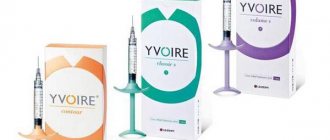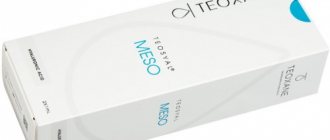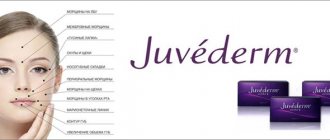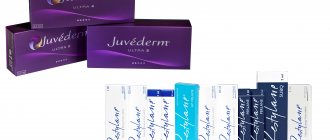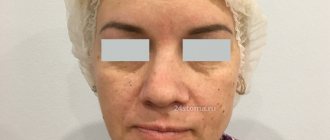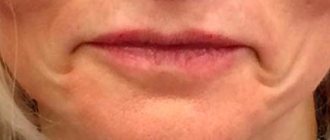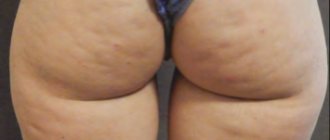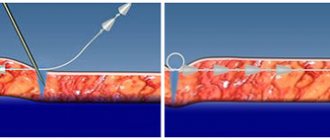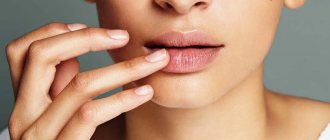Intra-articular injection is a term used to describe a procedure in which a drug is delivered directly to a joint, usually to relieve pain. In the past, the predominant purpose of intra-articular joint access was aspiration of synovial fluid and injection of corticosteroids. In recent years, other intra-articular injection options have emerged, including synovial fluid grafts (eg, intra-articular hyaluronic acid), as well as biologic therapies using platelet-rich plasma and stem cell therapy. It is expected that many more treatment options will be available in the future for patients with joint disease using intra-articular injection techniques.
An intra-articular injection is usually prescribed when joint pain cannot be relieved by other conservative treatments, including pain medications, oral anti-inflammatory drugs, and physical therapy.
Types of intra-articular injections
The purpose of intra-articular injections may vary depending on the drug used. While pain relief is the most common purpose of joint injections, they can also be used to deliver chemotherapy drugs such as Doxil (doxorubicin) directly to a joint affected by cancer. They can also be effective in eliminating fungal infection in the joints (also known as fungal arthritis).
When used for pain relief, different intra-articular injections work differently:
- Corticosteroids work by reducing local inflammation. They inhibit the production of inflammatory cells that are naturally activated in response to acute injury or chronic disease. Intra-articular procedures are most often used to treat osteoarthritis, acute gout, and rheumatoid arthritis of the knee. However, long-term use of corticosteroids is known to gradually damage joints.
- Hyaluronic acid is a natural substance found in synovial fluids that lubricates joints. In osteoarthritis, this substance can quickly break down and lead to poor lubrication.
- Local anesthetics are sometimes injected into the joint as an option for pain control after arthroscopic surgery. But this method of pain management is no longer recommended clinically because research suggests it may contribute to the degradation of chondrocytes in joint cartilage.
- Joint injections of Botox (botulinum neurotoxin A) have been shown to significantly reduce pain in patients with severe osteoarthritis of the knee. However, the use of Botox does not improve or restore physical joint function.
- Platelet-rich plasma (PRP), made from whole blood, contains platelets and the liquid part of the blood known as plasma. Intra-articular injections of PRP have been shown to reduce pain and improve physical function in individuals with osteoarthritis by supporting collagen regeneration in the joints. However, the use of this treatment method does not completely eliminate the disease, but it can stop the progression of arthritis.
Intra-articular injections of hyaluronic acid are aimed at increasing lubrication, reducing pain and improving range of motion in the joint.
Range of procedures using hyaluronic acid
Procedure name | Its essence | Who is it shown to? |
| Mesotherapy | Introduction of combined preparations (multiple injections) containing not only hyaluronic acid, but also peptides, vitamins, antioxidants and amino acids. | For pigmentation, various defects and scars, severe dry skin, its withering, as a means of preventing age-related changes. |
| Biorevitalization | Shallow microinjections designed to eliminate facial wrinkles, dry skin and some changes in the oval, improve skin turgor and tone. | To delay age-related changes on the face, prolong youth, maintain moisture levels in the skin and stimulate regeneration processes. |
| Contour plastic | Replenishing missing or lost volumes on the face with gels of a special, denser composition (for example, delicately adding volume to the cheekbones makes the face more open and fresh, it “lifts”). | With a decrease in skin elasticity and tone, the appearance of excessive shadows and folds on the face, loss of clarity of the oval. |
| Bioreinforcement | Restoring facial clarity and pronounced contour. It’s as if the face is “stitched” according to a special pattern with an active substance, and the resulting connective tissue will become a kind of frame. | Gravitational ptosis, when facial tissues gradually “slide” down under the influence of gravity, forming an unclear line of the lower jaw and chin. |
| Fillers | Hyaluronic acid of special concentration to fill wrinkles. | For pronounced nasolabial folds and facial wrinkles. |
| Lip fillers | Correction and filling of lip volume. | With age, lips narrow. Hyaluronic acid allows you to perfectly eliminate any cosmetic imperfections - narrow, disproportionate, different sizes, unclear lip contour, irregular shape. |
Injections of low molecular weight hyaluronic acid are an excellent alternative to surgery; it is a minimally invasive and highly effective technique that allows you to combat various manifestations of age on the face - it is both a means of correction and correction, and excellent prevention.
Intra-articular injections of hyaluronic acid for osteoarthritis
Hyaluronic acid is produced by the human body. It is a natural part of the fluid that helps lubricate joints and keep them functioning smoothly.
When a patient has osteoarthritis, the amount of hyaluronic acid in the affected joint decreases. Injections of hyaluronic acid compensate for the deficiency of this substance.
Preparations with hyaluronic acid are called synovial fluid endoprostheses, since they take on the role of lubricants in the joints.
What should you not do when planning a pregnancy?
- Drinking alcohol
- it is better to avoid alcohol at the stage of pregnancy planning, and already during pregnancy it is strictly contraindicated. Through the placental barrier, alcohol penetrates into the undeveloped liver of the fetus, which cannot process it. Alcohol during pregnancy significantly increases the risk of premature birth, miscarriage and abnormal fetal development. Pregnancy in the early stages is difficult to notice in time, so it is better for the expectant mother to completely avoid alcohol. - Smoking
- when planning a pregnancy, you need to quit smoking. It is with this bad habit that cases of miscarriages and sudden infant mortality are often associated. - Taking some medications without a doctor’s prescription and, especially, toxic substances
- even the unreasonable use of dietary supplements and multivitamin complexes may not be beneficial for the expectant mother. After all, it is better to obtain all useful microelements naturally from a varied and rational diet. Therefore, it is better to consult a doctor regarding any medications when planning pregnancy.
What to expect with hyaluronic acid injections?
Depending on what type of synovial fluid graft your doctor uses, the number of injections may vary—it could be one injection or three to five injections, with one week between treatments. Pain relief is usually achieved after 4-12 weeks, and the effects have been shown to last up to several months. Treatment can be repeated as needed.
The injection is carried out the same way for all types of drugs. First, the doctor cleans the area. If your knee is swollen from excess fluid, your doctor may administer a topical pain reliever and then insert a needle into the joint to remove the excess fluid. Using the same needle in the joint, the doctor can inject hyaluronic acid into the knee joint.
After the injection, the patient should avoid heavy exercise for one or two days. Otherwise, the effectiveness of the injections is reduced.
Relevance of the problem
The skin is one of the largest human organs. It is in direct contact with the external environment and constantly experiences antigenic load, acting as an organ of immunogenesis [5]. This is proven, in particular, by the fact that the dermis contains immunocompetent cells and mediators of both natural and adaptive immunity [6, 15, 17]. It is no coincidence that in recent decades the idea of the skin immune system—SALT—has been formed, which is the subject of a number of modern reviews [1, 5, 6, 15, 16].
Disorders of the skin immune system underlie the immunopathogenesis of some diseases - psoriasis, atopic dermatitis, acne, skin lymphomas and others [13, 14, 16, 20, 49]. Therefore, the study of immunological mechanisms of regulation of skin functions in normal and pathological conditions, as well as the correction of immunopathological mechanisms in skin diseases and optimization of restoration processes in it remain an urgent scientific and clinical task. To solve this problem, a number of immunomodulators have been proposed: levamisole, cytomedins, cytokines, Gepon, recombinant interferons (Reaferon, Intron-A) [9, 10]. However, their effectiveness is not always high, and the results of their use are sometimes contradictory and ambiguous. There are also side effects. To reduce systemic complications of immunomodulatory therapy, local intradermal administration of immunomodulators seems promising. In particular, in the studies of Bazarny et al. [2] it has been shown that intradermal injections of Ribomunil not only have an immunotropic effect, but also activate reparative processes in the skin. However, there is virtually no other evidence of the effectiveness of immunomodulators when used intradermally.
In this regard, the immunological role of hyaluronic acid - as the main component of the intercellular matrix of the skin - in the regulation of inflammation, regeneration, in ensuring immunological tolerance and immunomodulation is interesting.
Contraindications for intra-articular injections
Contraindications for any intra-articular injection will include:
- Allergies to previous or proposed medications
- Early severe steroid reaction
- Concomitant osteomyelitis
- Bacteremia
- Hemarthrosis
- Upcoming joint replacement surgery within a few days
- Infectious arthritis
- Joint prosthesis
- Osteochondral fracture
- Periarticular cellulite
- Poorly controlled diabetes mellitus
- Uncontrolled bleeding or coagulopathy
Relative contraindications include crystalline steroid injections near critical arteries or joints. Large steroid crystals can potentially be mechanically erosive during exercise immediately after corticosteroid injection. When injecting hyaluronic acid, significant stress on the joint for several days is also not recommended.
Reasons for changes
With biological withering, due to a decrease in estrogen production, over 20% of women of reproductive age and up to 60% of postmenopausal women experience discomfort due to loss of elasticity and dryness of the mucous membranes of the intimate area. Previous vulvovaginal infections also adversely affect the condition of the tissues of the vulva, vagina, including the cervix.
Histological studies, as a rule, in such cases show changes: non-functioning fibroblasts, dried extracellular matrix, destroyed collagen, contracted elastic fibers and germination of blood vessels into the squamous epithelium.
Risk factors to consider before undergoing the procedure
- Risk factors for avascular necrosis
- Diabetes
- Dialysis patients
- Hemoglobinopathy
- Previous use of steroids
- Cushing's syndrome
- Radiation exposure
- Hyperglycemia in patients with diabetes
- Immune deficiency or increased risk of potential infection
- Anticoagulant therapy or patients with coagulation disorders
Every physician who performs intra-articular injections on a regular basis must ultimately face the decision of whether to inject intra-articularly after joint arthroplasty. Infectious complication after joint arthroplasty can be catastrophic, including removal of hardware, insertion of antibiotic devices, prolonged use of antibiotics, and revision of the arthroplasty procedure. However, there may be times when the benefit outweighs the risk and a doctor may perform this procedure. Attention should be paid to the potential activation of latent infections such as Mycobacterium tuberculosis, Nocardia, Cryptococcus, Pneumocystis, Borrelia burgdorferi, toxoplasmosis, etc. when using corticosteroids.
Ultrasound-guided injections
Ultrasound intervention techniques are quickly becoming a popular new technology. With the improvement in image resolution and tolerability of new ultrasound technology, as well as the lack of radiation exposure, the use of ultrasound guidance for injections is expected to continue to grow in popularity. Images of confirmed initial needle placement as well as the post-injection position should be saved.
Possible complications
The use of hyaluronic acid in mesotherapy, contouring and as independent injections is safe in the absence of contraindications and precautions, and following the recommendations of cocktail manufacturers. Complications are extremely rare, however, they need to be considered:
- Allergic reactions. They are possible if some contraindications are ignored.
- Swelling. Thin and sensitive skin is prone to the appearance of edema on the slope. Normal skin response. The likelihood of swelling increases with visible age-related changes, when injections are administered to the middle and deep areas of the dermis.
- Complications of an infectious nature. Possible in conditions of injection at home due to the impossibility of meeting all safety requirements.
- Uneven distribution of the drug. The appearance of visible bumps due to non-compliance with the cosmetologist’s recommendations after the session.
